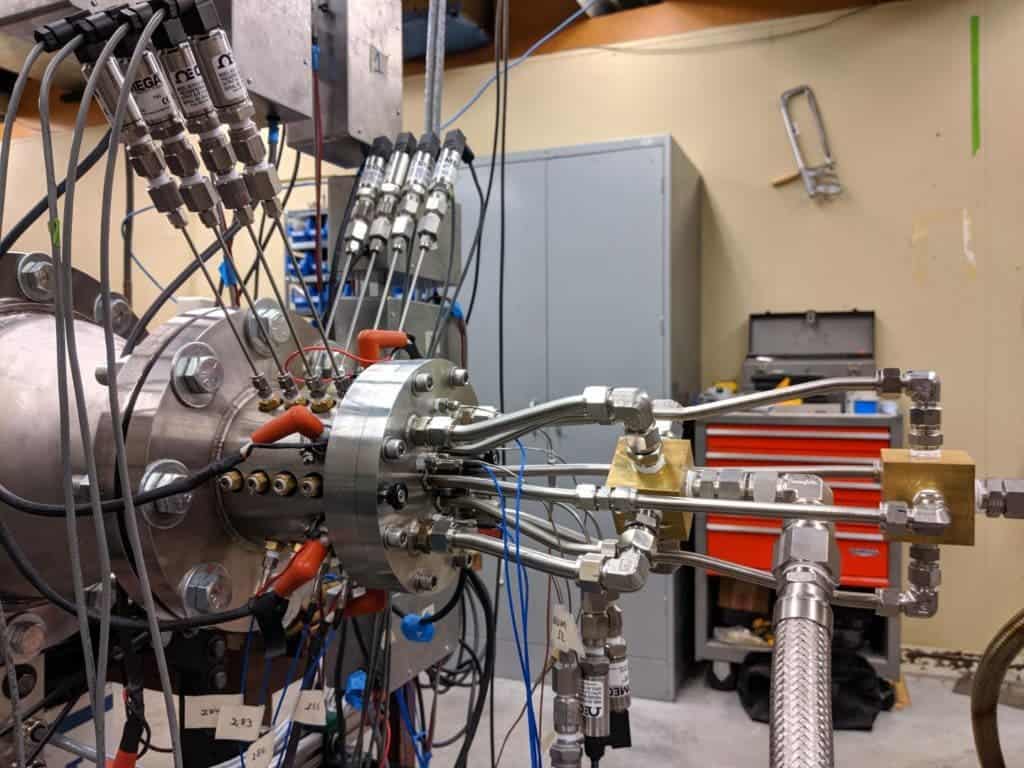A new type of engine could make air and space travel more fuel-efficient, lightweight and less complicated to construct than your normal run-of-the-mill rocket. And, while companies have been working on prototypes for the engine for a few years now, a team from the University of Washington (UW) has actually developed tests to make this somewhat unpredictable firepower more stable.
Coined the “rotating detonation engine“, the engine’s detonation chamber is a thin, hollow cylinder. When fired up, the engine sets off a detonation using fuel, oxygen, pressure and heat which then sends a shockwave chasing itself through the cylindrical loop.
“A rotating detonation engine takes a different approach to how it combusts propellant,” said lead author James Koch, a UW doctoral student in aeronautics and astronautics. “It’s made of concentric cylinders. Propellant flows in the gap between the cylinders, and, after ignition, the rapid heat release forms a shock wave, a strong pulse of gas with significantly higher pressure and temperature that is moving faster than the speed of sound.
“This combustion process is literally a detonation — an explosion — but behind this initial start-up phase, we see a number of stable combustion pulses form that continue to consume available propellant,” he continues. “This produces high pressure and temperature that drives exhaust out the back of the engine at high speeds, which can generate thrust.”
Published in Physical Review E, the UW researchers developed an experimental rotating detonation engine in which they could control different parameters, like the size of the gap between the cylinders. Then they recorded the combustion processes with a high-speed camera. Taking only half a second to complete, the researchers recorded these experiments at 240,000 frames per second so they could see what was happening in slow-mo. From there, they developed a mathematical model to mimic what they saw in the videos.
“This is the only model in the literature currently capable of describing the diverse and complex dynamics of these rotating detonation engines that we observe in experiments,” said co-author J. Nathan Kutz, a UW professor of applied mathematics.
The model they developed allowed them to determine for the first time whether a rotating detonation engine would be stable or not and also allowed them to assess how well a specific engine was performing.
“My goal here was solely to reproduce the behavior of the pulses we saw — to make sure that the model output is similar to our experimental results,” Koch said. “I have identified the dominant physics and how they interplay. Now I can take what I’ve done here and make it quantitative. From there we can talk about how to make a better engine.”
The new engine differs from normal rocket propulsion in that your everyday rocket works by burning propellant and then pushing it out of the rear to create thrust. The shockwave method is much more efficient (and badass). It would also save a lot of fuel. The Space Shuttle required more than 3.5 million pounds of propellant to reach orbit — that is about 15 times heavier than a blue whale.

GE Research claims an aircraft propelled by a rotating detonation engine in place of current jet engines could travel from New York to LA in an hour and touts that, with the time change, you would actually be going back in time.
The fastest commercial to date was the now-extinct Concorde. Able to travel at speeds just north of Mach 2, it utilized turbofans to propel it forward. Alas, the bird was just too expensive to fly, so it was decommissioned in 2003.


